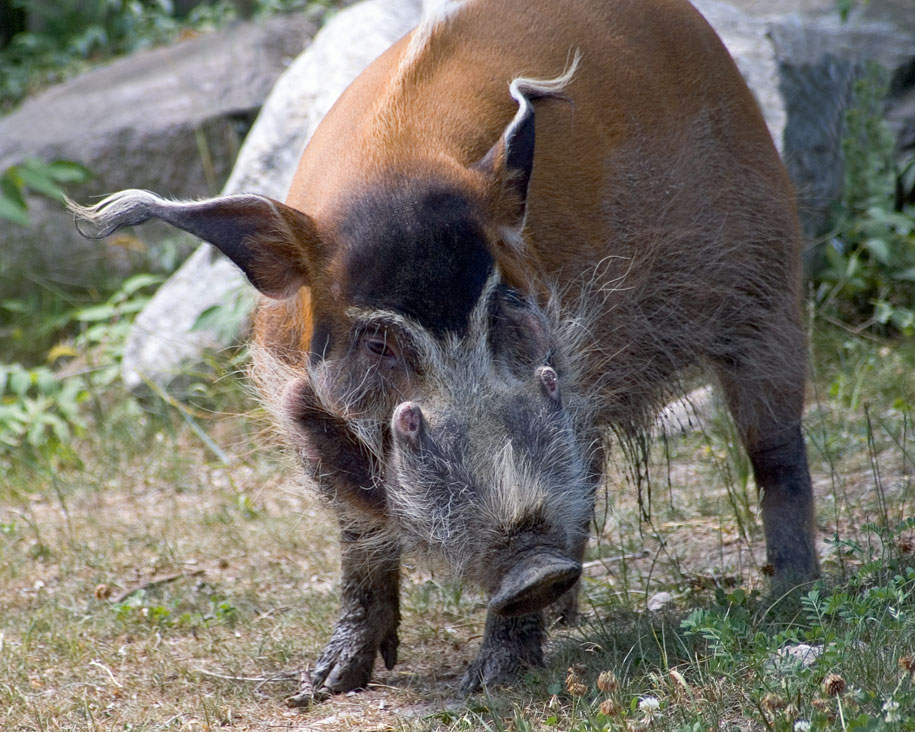Alerts
Please be advised that our bird aviaries are open!
Your Toronto Zoo is committed to the health and safety of the animals in our care. We take proactive steps to protect our birds from Avian Influenza which has been confirmed in a wild bird in southern Ontario, and some birds may still be off display.
Please note Splash Island is still closed and will not open until July due to unforeseen delays in construction. Please watch for updates on https://www.torontozoo.com/tz/splash or on our social media pages. Thank you!
Please note the following animals are currently not on display due to various reasons including Avian Bird Flu, and Covid-19 sensitivity:
- Flamingo, peacock, owl, bald eagle, and aviaries
- Some Kids Zoo Animals
- Cougar
- Moose
- Kangaroo walk through (kangaroos are still visible)
- Axolotl
We apologize for the inconvenience!


Mammal
Location at the Zoo:
African Rainforest
Region: Africa and Asia
Red river hog
As all pigs, the red river hog is an even–toed ungulate and although they have four toes on their feet, they walk only on their third and fourth digits with the remaining two held clear of the ground. They are stout bodied animals with short red fur including contrasting black and white markings on the head, and a white eye ring. The leaf-shaped ears have long black and white tassels and an erect, long bristled, white mane runs the length of the back. The tail is long and hairless except for a double tuft of bristles at the tip. These features are used as defenses because, when fluffed out, they greatly increase the perceived size of the animal. The head is disproportionately large, the muzzle long and narrow which, in males, has lengthwise ridges and warts, usually hidden in the long facial hair. The upper tusks are relatively small and almost invisible, whereas the lower ones are razor sharp and grow to 18 cm in length. Their body length varies from 100 to 150cm, shoulder height is 55 to 80 cm and a tail length of 30 to 45 cm. Weight is between 45 and 120 kg. Males tend to be larger than females.Conservation Status: IUCN
